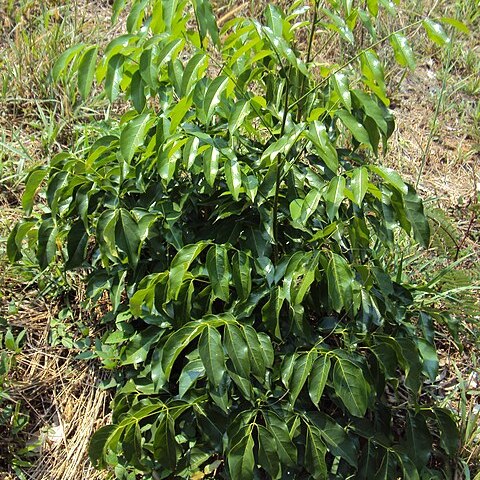Lianas or scandent shrubs. Branchlets glabrous or very sparsely pilose. Leaves 5-9-foliolate; rachis 30-45 cm, including petiole 8-14 cm; leaflet blades oblong to oblong-lanceolate, 10-15 × 3.5-7 cm, subleathery, both surfaces glabrous, secondary veins 5-7 on each side of midvein, base rounded, apex shortly acuminate to sometimes obtuse. Pseudopanicles axillary or terminal, narrowly pyramidal, 12-35 cm, compact, brown or reddish pilose; branches numerous, ascending or spreading; branchlet nodes with several close but not fascicled flowers on a short branchlet. Pedicel very short. Flowers ca. 8 mm. Calyx campanulate, ca. 3 mm, very sparsely pilose, apex truncate or obscurely deltoid toothed. Corolla whitish to purplish red, 8-10 mm; standard orbicular, with calluses cordate at base, emarginate at apex. Ovary pilose. Legume oblong, 5-10 × 2.5-3(-4) cm, thin, glabrous, with conspicuous reticulate veins; both sutures with a 3-8 mm wide wing. Seeds 1-3 per legume, oblong-reniform. Fl. May-Jun, fr. Aug-Nov.
More
A woody creeper or climbing shrub. The leaves have 5-9 leaflets. The leaves are oblong and 10-15 cm long by 4-7 cm wide. Flowering shoots are 12-35 cm long. The flowers are 8 mm across. The pods are 5-10 cm long by 3-4 cm wide. They contain 1-3 seeds.
Dry evergreen forest, mixed dipterocarp forest, secondary forest, usually along the sides of roads, in open and highly disturbed areas, logged-over areas, and Hevea rubber plantations; at elevations up to 100 metres.
More
It is a tropical plant. It grows by streams in mountains usually at low elevations but can be up to 2,000 m in Yunnan. It occurs in the Western Ghats in India.

